How to Start Your Retirement Journey
June 25, 2025
Retirement can be both exciting and overwhelming. You have spent years, maybe even decades, building your career and planning for the future. Many people find themselves unsure of how to make the leap from working life to retired life.
The process involves more than just choosing a final workday. It is a complex change that needs financial choices, workplace setup, and emotional planning.
Here’s a comprehensive guide to help you approach retirement with confidence and clarity.
Step One: Understand Your Employer Benefits Before You Leave
As you near the end of your career, take time to carefully review any retiree benefits your employer may offer. These could include retiree health insurance coverage, life insurance continuation, or unused vacation payout. Don’t assume you know the details—benefits vary widely by employer and sometimes by tenure. Reach out to your human resources department for a full breakdown, and ask for written documentation to avoid any surprises later.
It’s also a good idea to explore whether you’re eligible for COBRA coverage or should begin shopping for an individual healthcare plan until you qualify for Medicare. Getting this sorted before you officially retire can save you both time and stress.
Step Two: Formally Notify Your Employer and Prepare for Handover
Retiring from your job usually involves more than a goodbye party and a handshake. You’ll likely need to submit a formal resignation letter stating your intended last day. Depending on your role, you may also be asked to train your replacement, document procedures, or provide status updates on long-term projects.
Even if you’re not an executive or manager, having a clear succession plan is a professional courtesy that helps keep your team running smoothly after you leave. Take the time to organize files, share contacts, and create guides for any tools or systems you manage. Institutional knowledge is valuable—passing it on shows respect for your team and helps preserve your legacy.
Step Three: Make Key Financial Decisions
Retirement also means making some important decisions about your money. If you have a 401(k) or another workplace retirement plan, you must decide what to do with your money. You can leave the funds where they are, roll them over to an IRA, or start taking distributions. A financial advisor can help you evaluate your options and build a withdrawal strategy that supports your retirement lifestyle while minimizing tax impacts.
If you’ve been contributing to a Health Savings Account (HSA), you can continue to use that money for qualified medical expenses during retirement. HSAs don’t require you to spend the funds by a certain date, and they can be a valuable tool for covering healthcare costs as you age.
Pension holders should also review their plan options. If you have a defined benefit pension, you’ll likely need to choose between receiving a lump sum or monthly payments. Each choice has pros and cons, so consider factors such as life expectancy, need for steady income, and other sources of retirement funds.
Step Four: Prepare Your Professional Network for Your Exit
You’ve probably built strong relationships during your career—don’t let them fade away. Tell close colleagues about your retirement plans in person if possible, and follow up with a thoughtful email or card expressing gratitude and offering ways to stay in touch. You never know when those connections might lead to opportunities in consulting, mentoring, or simply staying socially connected.
Make sure to provide your personal contact information to those you’d like to keep in your life. Whether it’s LinkedIn, email, or a phone number, those lines of communication can come in handy if you decide to pursue part-time work or volunteering.
Step Five: Start the Emotional Transition
Retirement isn’t just a financial or professional shift—it’s an emotional one, too. Many people find that work provides purpose, identity, and a daily routine. Without those anchors, it’s easy to feel a bit adrift. That’s why it’s important to start thinking about how you want to spend your time and energy before you actually retire.
What did you love most about your career? If it was the structure, consider creating a weekly schedule that includes exercise, hobbies, and social time. If you thrived on helping others, look into volunteer roles or mentoring opportunities. Exploring new interests—whether it’s travel, learning a new skill, or joining a community group—can help you discover a new rhythm and purpose.
Give yourself grace during this transition. It’s okay if it takes time to figure out what retirement looks like for you. By planning ahead, staying connected, and remaining open to new experiences, you can turn retirement into one of the most fulfilling chapters of your life.
Conclusion
Retirement is more than simply leaving your job—it’s a thoughtful process that affects nearly every area of your life. From finalizing benefits and financial plans to saying goodbye at work and planning your days, each step brings you closer to a rewarding post-career life. With preparation and the right mindset, you can enter retirement with both peace of mind and a sense of purpose.
Sources:
https://www.fidelity.com/learning-center/life-events/how-to-retire
Disclosure:
This information is an overview and should not be considered as specific guidance or recommendations for any individual or business.
This material is provided as a courtesy and for educational purposes only.
These are the views of the author, not the named Representative or Advisory Services Network, LLC, and should not be construed as investment advice. Neither the named Representative nor Advisory Services Network, LLC gives tax or legal advice. All information is believed to be from reliable sources; however, we make no representation as to its completeness or accuracy. Please consult your Financial Advisor for further information.

